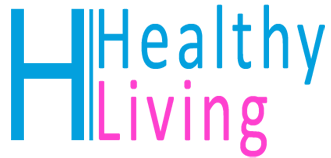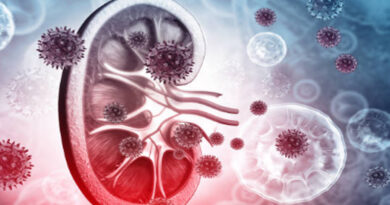Kidney Diet Secrets That Can Reverse Chronic Kidney Failure
There was a time when the main remedy for advanced kidney failure was kidney dialysis, which — although effective — requires regular repetition and is highly inconvenient.
So it’s exciting to see there have been some very promising reports by leading kidney disease researchers, who have published articles in highly regarded, peer-reviewed medical journals about their success in reversing kidney disease by using a specially designed kidney diet.
More recently, recent research by Dr Charles Mobs, PhD, at the Mount Sinai School of Medicine, found a diet with quite high levels of fat, but restricted carbohydrates and with only moderate consumption of protein can actually reverse kidney failure in as little as two months. In fact it has been found that just four weeks on the diet may be enough to reverse the slide down to kidney failure.
Check out these related articles, too:
Juice and The Effect It Has On Your Blood Sugar
SUPERFOODS FOR BLOOD SUGAR CONTROL
Almonds The Ultimate Diabetes Superfood
How to Lower High Blood Sugar With Diabetes Herbal Remedies
Warning Signs of High Blood Sugar 3 Are Very Serious
The key secret of a kidney failure diet is based around the certain kidney disease diet restrictions. These include:
Protein.
Salt or sodium.
Potassium.
Phosphorous.
Whilst these items are still permissible in a kidney failure diet menu, the amounts need to be strictly controlled, depending on the degree of damage that has occurred to the kidneys. This is because the ability of a damaged kidney to excrete excess amounts of these substances is limited. For example, healthy kidneys can deal with as much as 4700 milligrams of potassium, whilst a person with kidney disease should keep their daily intake strictly below 2700 milligrams. The Recommended Daily Allowance for potassium for healthy folks is set at 3,500 milligrams.
A similar restriction applies when you need to adopt a low phosphorous diet, because impaired kidneys can only reasonably handle 700 – 900 milligrams daily, compared with the up to 2,000 milligrams a day a healthy pair of kidneys can cope with.
Many folks know about the dangers of excess salt or sodium, and these are now generally well highlighted on food labels. It is recommended that you eat no more than 2,400 milligrams of salt or sodium daily. Unfortunately, it’s very easy to exceed this by a very wide margin, because salt is found in virtually all processed foods and even in the most unlikely places, such as breakfast cereals and even top brands of mineral water.
Generally, a healthy pair of kidneys will be able to dump any excess, although constant high levels bring with it the danger of raised blood pressure — which, in turn — can damage the kidneys.
But, if you are on a chronic kidney failure diet, salt consumption needs to be strictly controlled to between 1,000 and 2,000 milligrams a day, from all sources, depending on your level of kidney impairment. This is to avoid a harmful build up of salt which can result in fluid building up in the lungs, making it very hard to breathe and even bringing about heart failure, due to overworking the heart by excess fluid in the bloodstream.
Excessive protein consumption is one of the possible causes of kidney disease. So, not only is the amount of protein consumed when on a renal failure diet important, so is the quality.
And, if you have been depressed by all this gloom about what you can’t eat, let’s now celebrate all the mouthwatering treats that you can feast on whilst on a kidney failure diet plan.
Chief amongst those is one of the highest forms of quality protein: oily fish, such as delicious salmon. This is rich in Omega 3 oils, which was shown in research by Dr Alexander Leaf of Harvard Medical School who fed fish oil to animals with kidney disease and affected a 100% cure. A 3 ounce piece of wild salmon contains 50 milligrams of sodium, 274 milligrams phosphorus and 368 milligrams of potassium.
And you can also feast on red bell peppers, which are delicious raw, stuffed with rice and herbs or roasted in olive oil. Yet a half a cup only contains 1 milligram of sodium, 10 milligrams of phosphorus and 88 milligrams of potassium. What’s more they are a very rich source of vitamin C (containing twice as much as a green pepper). They also contain vitamin A, as well as vitamin B6, folic acid and fiber. The red color also shows they contain lycopene, an antioxidant thought to protect against certain cancers.
You can also enjoy onions in many dishes to add texture and flavor, because they are not only amongst the healthiest vegetable to eat, they are also crammed with flavonoids, especially quercetin, a powerful antioxidant that works to reduce heart disease and protects against many cancers. And onions keep you well under your kidney diet targets, containing just 3 milligrams of phosphorus, 3 milligrams of sodium and 116 milligrams of potassium in 1/2 a cup. Onions are also a good source of chromium, a mineral that helps with the efficient metabolism of carbohydrates, fat and protein.
And the even more exciting news is the development of diets, based on all this highly respected research has allowed some folks with end stage renal failure to actually reverse their kidney disease to such an extent they have actually managed to avoid starting kidney dialysis at all.
And what about that hidden phosphorus in your diet?
As you can see, spotting hidden phosphorus can be very tricky. So here’s a more detailed expose of where to find it and eliminate it from your diet: more kidney diet secrets
And don’t give up hope of avoiding kidney dialysis, because plenty of other folks have done just that and you can read their heartwarming stories here: kidney diet secrets [http://kidneydietsecrets.org/]
Article Source: http://EzineArticles.com/6286828




